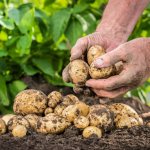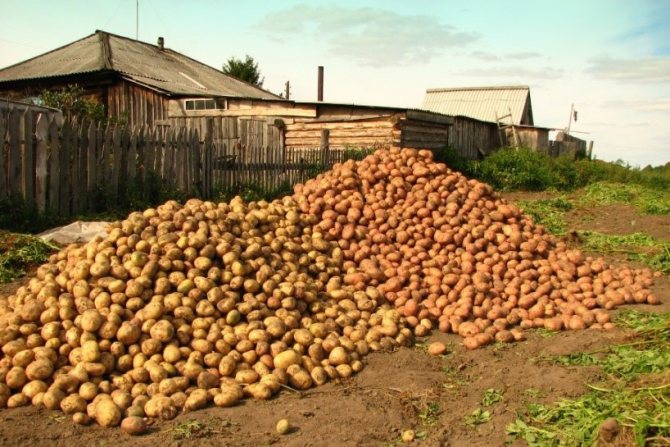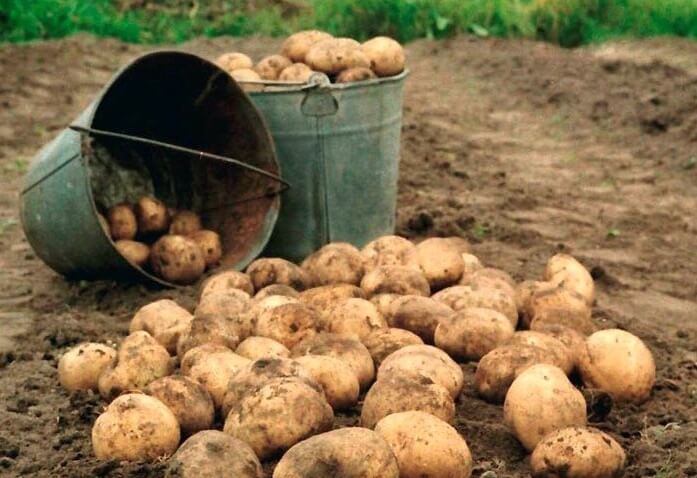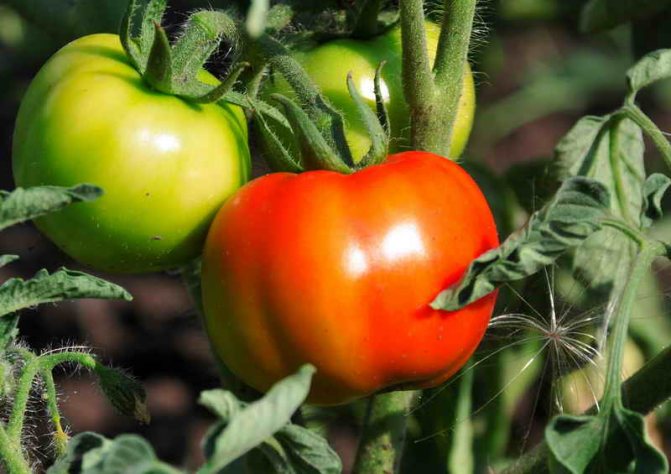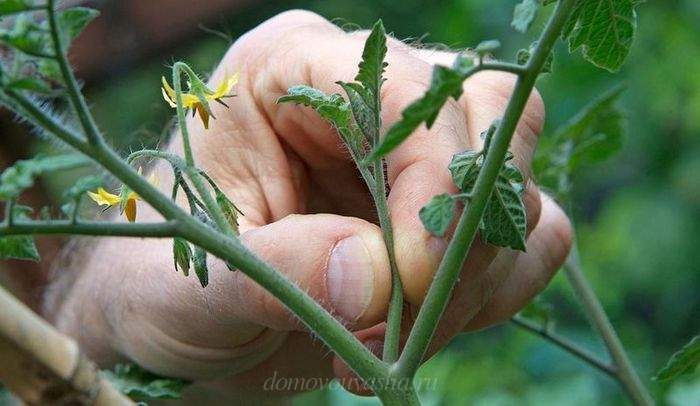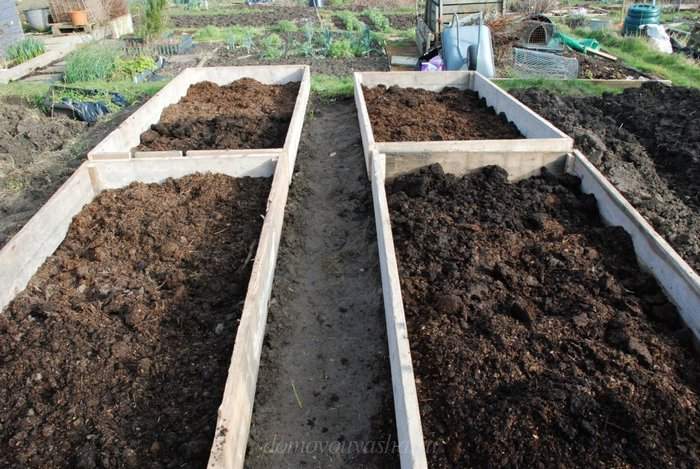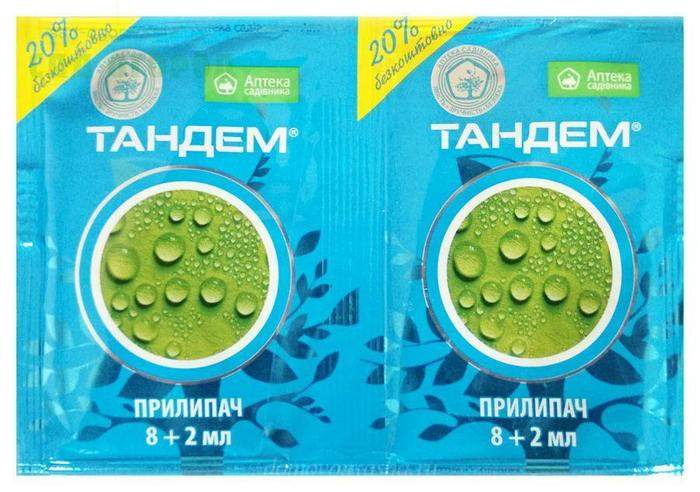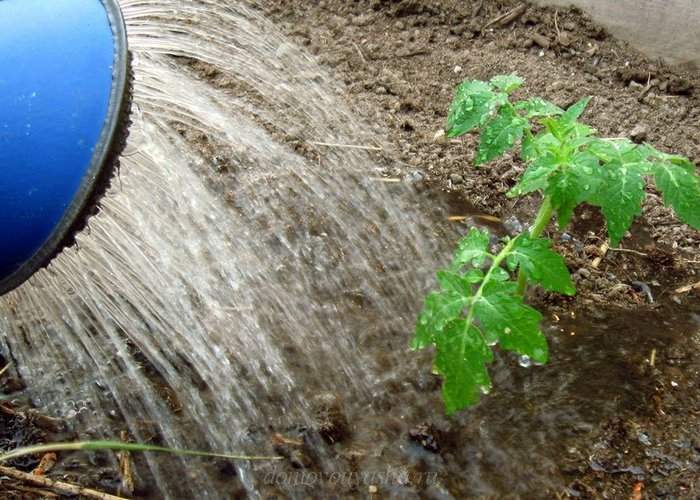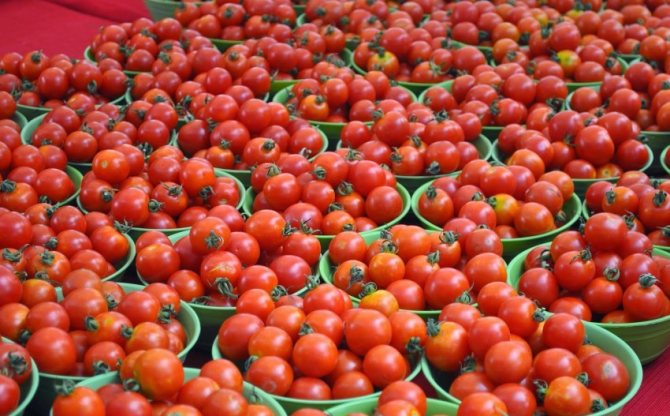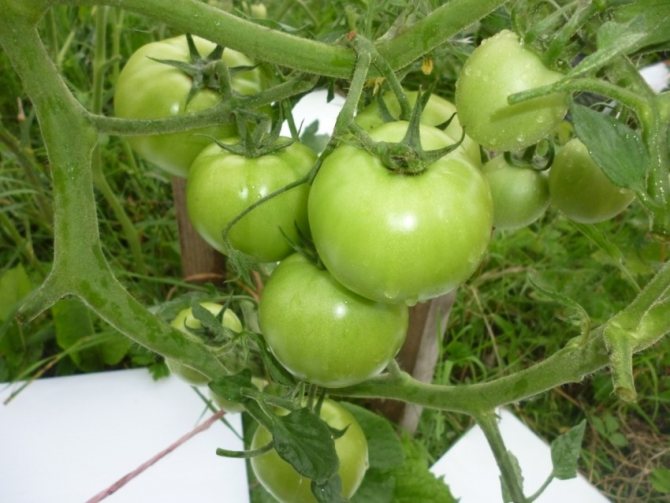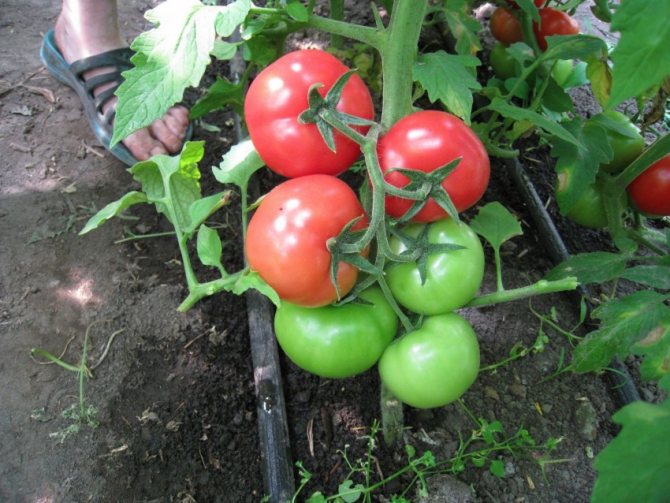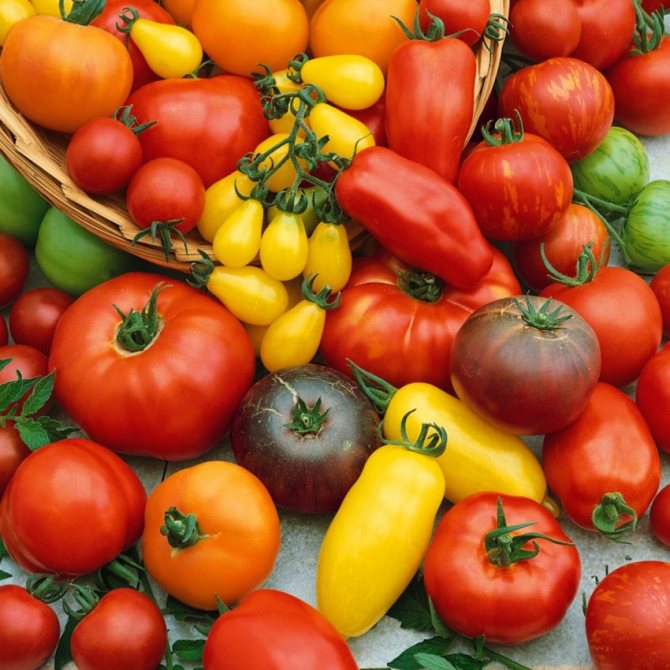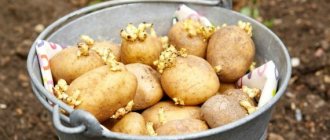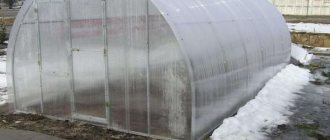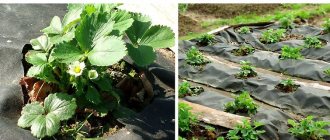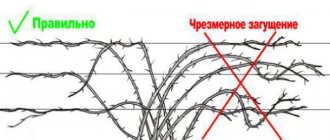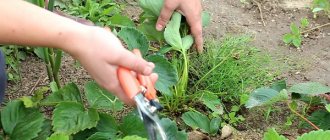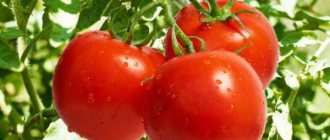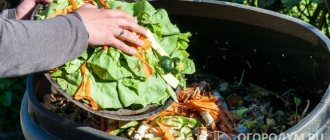What is the yield of potatoes from 1 hundred square meters you can get
Usually, 3-5 times more potatoes are harvested in the fall than they were planted in the spring. For example, a beginner, planting 35 kg of tubers per hundred square meters, will receive 100-180 kg, and an experienced gardener - 300-350 kg.
In central Russia, the yield of potatoes from 1 hundred parts can reach 500-800 kg. To do this, you just need to follow the basic cultivation techniques. Using the methods of planting potatoes for a large harvest, even in a dry summer, you can get 600-980 kg from one hundred square meters. The tubers will reach a mass of 800-1000 g, there will be almost no fines.
Pollination
The tomato is a self-pollinating plant that produces a lot of quality pollen. But if you want to harvest big yields, then the culture should be helped by attracting helper insects (bees and bumblebees).
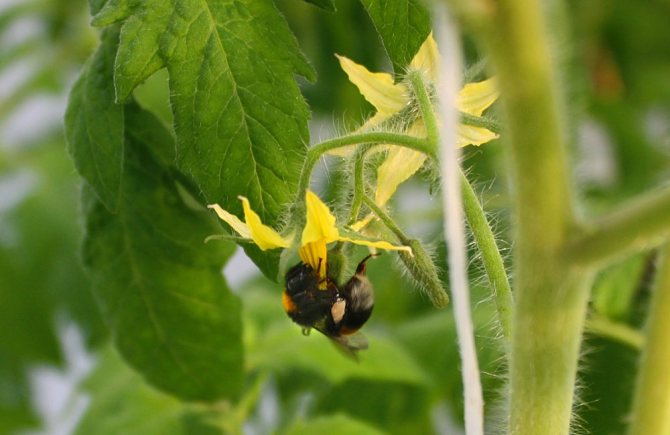
Pollination process
To do this, just sow bright annual honey plants between the tomato bushes: mustard, rapeseed, coriander or basil. These crops will not only attract bees to the garden beds, but also improve the taste of the fruit and loosen the soil.
Sometimes a tomato cannot self-pollinate. The reasons for this may be:
- the night temperature has dropped sharply and is not higher than +13 degrees (as a result, the anther is deformed)
- daytime temperature for a long time is kept at around + 30-35 degrees and above (in such conditions, flowers wither, and pollen grains die)
- unfavorable pistil structure in some large-fruited varieties
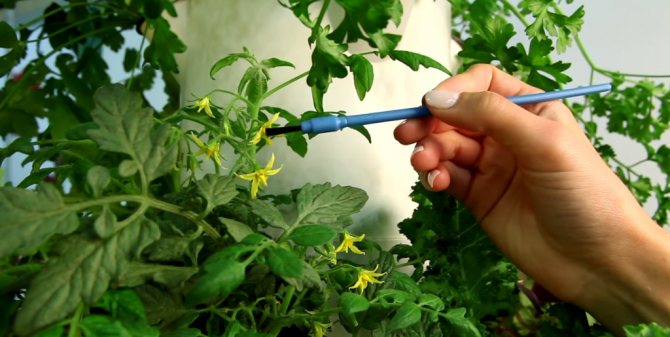

Artificial pollination of tomatoes
In such cases, it is necessary to help the plant to help pollinate. You can easily tap the blooming brush or tilt the bud with the protruding pistil and shake it. The ideal time for artificial pollination is considered from 10 to 14 hours. The procedure is recommended to be repeated after four days. Immediately after pollination, the plant must be watered or sprayed on the flower.
back to menu ↑
See also: Garden gerbera: description, species and varieties, planting and caring for an African flower in the open field, reproduction, possible diseases (40+ Photos & Videos)
How to grow a good crop of potatoes
One, even a very effective technique, does not give the desired result. For good growth and development of plants, they must be used in combination.
The choice of planting material
One of the important conditions for obtaining a high yield is the selection of a suitable variety and the use of healthy seed material. There are no universal varieties, for each region you need to select your own. So, the maximum potato yield in the Moscow region is given by:
- Lukyanovsky;
- Lugovsky;
- Sineglazka;
- Effect;
- Santa;
- Fresco.
From autumn, select large tubers weighing 100-150 g. This is optimal for planting. Larger ones do not give an increase in yield.Cutting them into pieces is undesirable, since many varieties react negatively to this - they are more easily infected with diseases, lagging behind in development.
Tuber preparation
Before the onset of cold weather, hold the tubers on a glassed-in balcony or veranda for three to four weeks. Turn them over every 7-10 days. The tubers should turn green. This will help them germinate better.
In February-March, a transverse circular circular incision with a depth of 1 cm can be made on the tubers. This technique helps to induce the germination of eyes (usually dormant). Thanks to this, the number of stems increases and the potato yield increases by 10-15%.
A month before planting, seed tubers are germinated in shallow boxes in a warm, bright place.
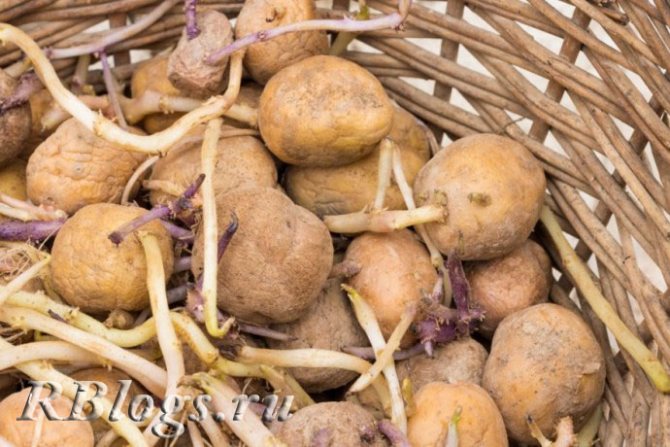

Then plant
The alternation of potatoes with other crops is of great importance. It tolerates repeated and even permanent planting in the same place well, but crop rotation is necessary to increase yields.
The best precursors for potatoes are cucumbers and other pumpkin seeds, cabbage. It is permissible to plant it after root crops and onions.
What to process before planting
Three to four weeks before planting, seed tubers are useful to spray twice:
- a solution of potassium permanganate (1 g per 10 l of water);
- water extract of wood ash (insist a glass of ash in 2 liters of water for a day and filter).
When and how to plant correctly
Potatoes are planted in open ground when the soil at a depth of 8-10 cm warms up to 10-12 ⁰C.
Usually it is recommended to plant it with a row spacing of 70 cm. To get a good potato crop, this recommendation is not suitable. Firstly, at such a distance, there is not enough soil for hilling, and many tubers will turn out to be green. Secondly, in the years of strong development of phytophthora, they will become infected faster, since the infection will immediately get on them from the leaves.
It is better to plant potatoes according to this scheme:
- the distance between tubers in a row is 25-30 cm;
- between the rows - 90 cm;
- the embedding depth of tubers is 6-8 cm.
In wide row spacings, the tops are closed later, and it is easier to carry out high hilling. This contributes to the active formation of the crop.
Fighting tomato diseases
Like many garden crops, tomatoes need protection from disease throughout their growing period.
- When water splashes on the leaves during watering, a fungal infection of the plant often develops - late blight. The rapid spread of the disease is facilitated by high humidity and a sharp change in temperature. For prophylaxis and treatment, spraying with a solution of the "Barrier" preparation is used. Diseased bushes can be treated with infusion of garlic with potassium permanganate.
- Mosaic is a dangerous disease in which plants produce poor harvests or die. For prophylaxis, seeds must be pickled in potassium permanganate before sowing. The disease is transmitted through open wounds, therefore, when pinching, you should not touch fresh cuts with your hands.
- Brown spot develops when watering with too cold water. It forms on the leaves and spreads when watering to neighboring specimens. For the fight use the drug "Barrier".
If you follow these rules, then dreams of a good harvest will come true.
How to care
Although potatoes are unpretentious to care for, this does not mean that you can forget about them after planting.
How to water properly
To have a good harvest, the potatoes need to be watered twice in dry summer:
- In the budding phase - the beginning of flowering.
- During the period of intensive crop formation (early to mid-August).
Water so that moisture penetrates to a depth of 15-20 cm - the ash of the roots passes through there.
Per 1 hundred square meters, the water consumption is 2.5-3 m³.
If it is impossible to water the plants for any reason, weed the weeds and loosen the soil to a depth of 6 cm. The loose layer of earth prevents moisture evaporation. You do not need to sprinkle the potatoes.
The number of tubers depends on rains or watering in June-July, and in July-August, their mass.
How to feed
The size of the potato crop largely depends on the content in the soil of a sufficient amount of macro- and microelements.
For example, there is a proven granular fertilizer "Kemira Potato-5". It is applied in the spring, during soil preparation or during planting. You can feed potato plants during the growing season by scattering it over the soil surface in the aisles. The average application rate is 6-8 kg per hundred square meters.
Rotted manure is used from organic fertilizers. compost, humus, peat.
The rest of the post-planting care techniques (harrowing, loosening, hilling, weeding in rows) are common. You can get acquainted with them in this publication.
Care Tips
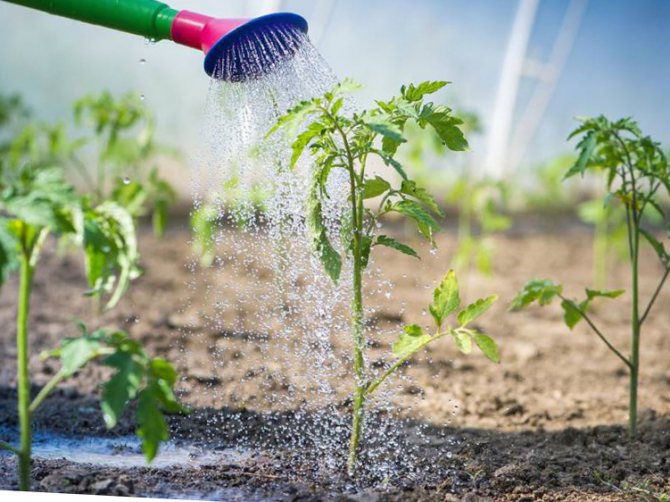

Watering a tomato
Tomatoes do not require complex maintenance, in order to increase the yield of bushes, they need to pay a little attention:
- You need to water the culture regularly, as the topsoil dries out at the root;
- It is necessary to remove unnecessary stepsons on tomatoes in time, as they slow down the growth of the bush and the ripening of fruits;
- Hilling and mulching strengthens the root system, which has a positive effect on the quality and quantity of fruits;
- Tomatoes need a timely garter.
Second potato harvest this season
Even in central Russia, you can get a crop at the same place twice a season. On a 10 m² garden bed, a total of about 250-300 kg will grow. tubers.
To harvest large potatoes from a small plot:
- In the fall, dig up the garden bed, and fill the planting furrows with rotted compost.
- In the spring (late April - early May) sprinkle furrows with hot water and sprinkle them with a mixture of wood ash and earth (1: 1).
- Plant the sprouted tubers 40 cm apart.
- Place arcs over the bed and cover with plastic wrap or other covering material.
- After a month, in a free area of the summer cottage (a smaller area), loosen the earth without digging.
- Spread out the new sprouted tubers no more than 5-10 cm apart.
- Set arcs above them and throw spunbond nonwoven fabric over them.
- Spud the plants in the main bed and feed them with a mullein at the same time.
- Remove shelters from both beds when the weather is warm.
- When you dig potatoes for food from the first bed, immediately transfer the plants from the second bed (with a large clod of earth) to the vacant space.
- The second crop of potatoes is harvested in September.
The need to garter a tomato before fruiting
Thinking about how to increase the yield of tomatoes and preserve the bushes, it is necessary to master a simple technique of tying plants, which guarantees effective support of the main stem and reduces the load on the shoots with formed fruits.


The garter is carried out before flowering, as the tomatoes grow, it is imperative to prepare supports in advance or make trellises on your own, stock up on soft and durable garters that cannot damage young shoots and help increase the yield.
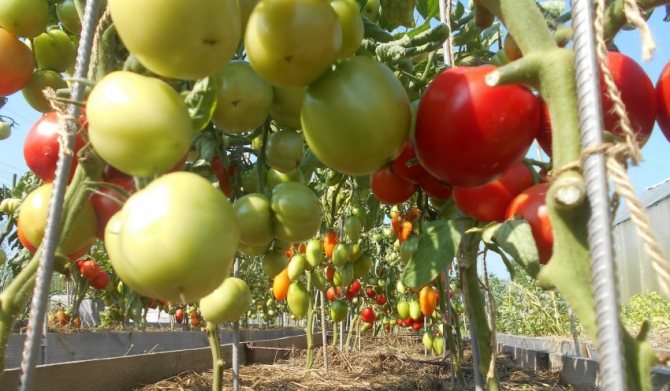

The results of the experiment carried out by gardeners (video)
When seedlings began to appear on the potato field, there was nothing on the "compost heap". The surrounding people believed that nothing would work out. But, after another week, and green bushes were seen on the heap, only they were weaker than on the potato field. Seedlings were a little late. The owners of the garden gave up and began to take care of the field with potatoes, planted in the traditional way: weeding, spilling, watered, beetles collected, etc. The heat was terrible. And then we decided to see how the "straw" potatoes are doing. They were very surprised to see that the potato bushes on the straw bed were much more fun than on the field, where the leaves sagged and the tops brightened. Having touched the soil under the straw, the gardeners felt the coolness.After all, straw is not only able to retain moisture from rare rains, but also to reduce the temperature on the soil.
They began to wait for the harvest. The first step was to dig out the potatoes from the field. And then we went to look at the "compost heap", removed the "rubbish" from the bushes and saw an amazing picture: there are even and clean tubers on the ground, like piglets under the uterus. They were easily collected in a bucket. As a result, 14 kg of potatoes were obtained from two square meters, and 2100 kg would come out from 3 acres (with the usual method of planting from 3 acres, it turned out 1630 kg). Here's an experiment! But there was no care for the potatoes!
Think now where to get straw for a potato field ...
You can see what it looks like planting potatoes under the straw in our video

